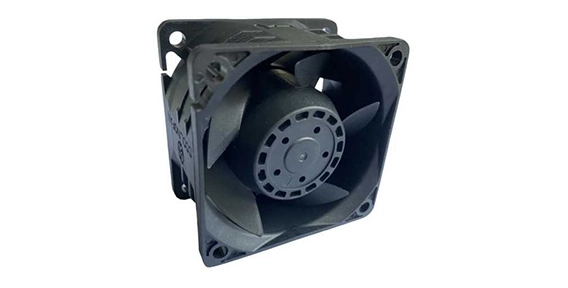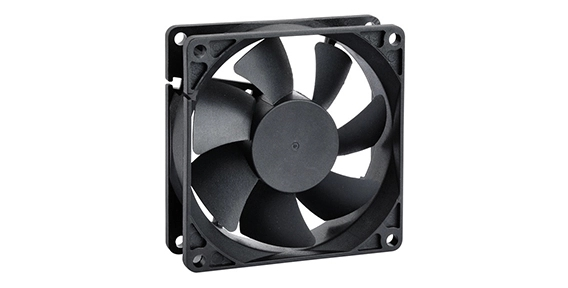DC axial fans are widely used in various industries for efficient cooling of electronic components and machinery. One crucial aspect that determines the effectiveness and performance of these fans is the design of the blades. In particular, backward curved blades have proven to be vital in enhancing the aerodynamic efficiency, cooling efficiency, energy efficiency, and sustainability of DC axial fans.
Aerodynamic Efficiency of Backward Curved Blades in the DC Axial Fan
The design of backward curved blades leads to improved aerodynamic efficiency in DC axial fans. Unlike forward curved blades, which generate significant noise and turbulence, backward curved blades provide a smoother and more efficient airflow. This design reduces air resistance, allowing the fan to deliver a higher flow rate at lower rotational speeds. Consequently, the fan operates more quietly and consumes less energy. Additionally, the backward curved blades reduce the pressure drop across the fan, resulting in improved overall system performance.
DC Axial Fan: Efficiency in Cooling Electronic Components
The primary purpose of the DC axial fan is the cooling of electronic components. Backward curved blades play a significant role in achieving efficient cooling. These blades are capable of producing a focused and directed airflow, ensuring that the cooling air reaches all critical areas of the electronic components. The backward curved design creates a high-pressure zone near the hub, which results in better air distribution throughout the system. This targeted and efficient cooling prevents overheating and extends the lifespan of the electronic components, leading to increased reliability and reduced maintenance costs.

Energy Efficiency and Sustainability in the DC Axial Fan
Energy efficiency is a key consideration in any industrial setting to reduce operating costs and promote environmental sustainability. Backward curved blades contribute to the energy efficiency of the axial cooling fan. The smooth airflow generated by these blades reduces the power required to overcome air resistance, resulting in lower energy consumption. Additionally, the backward curved design allows for optimal performance even at lower rotational speeds, further reducing power consumption without compromising cooling effectiveness. This energy efficiency not only translates to cost savings but also reduces the carbon footprint of the operation, promoting sustainable practices.
Furthermore, the use of backward curved blades in DC axial fans enhances the overall sustainability of the system. By providing efficient cooling, these fans help maintain the optimal operating conditions of the electronic components, reducing the risk of failures and the need for replacements. This not only saves money but also minimizes waste generation, contributing to a more sustainable environment. Additionally, the energy efficiency of DC axial fans with backward curved blades reduces reliance on fossil fuels, thus lowering greenhouse gas emissions and supporting a greener operation.
In conclusion, the importance of backward curved blades in DC axial fans cannot be overstated. These blades significantly enhance the aerodynamic efficiency of the fan while improving the cooling efficiency of electronic components. Moreover, the energy efficiency and sustainability goals of an operation are also achieved with the implementation of backward curved blades in DC axial fans. By choosing a reliable brand like XIE HENG DA, which specializes in producing high-quality DC axial fans, businesses can enjoy the benefits of these blades and ensure optimal performance in their cooling systems.


 EN
EN 
 +
+
 +
+
 +
+



